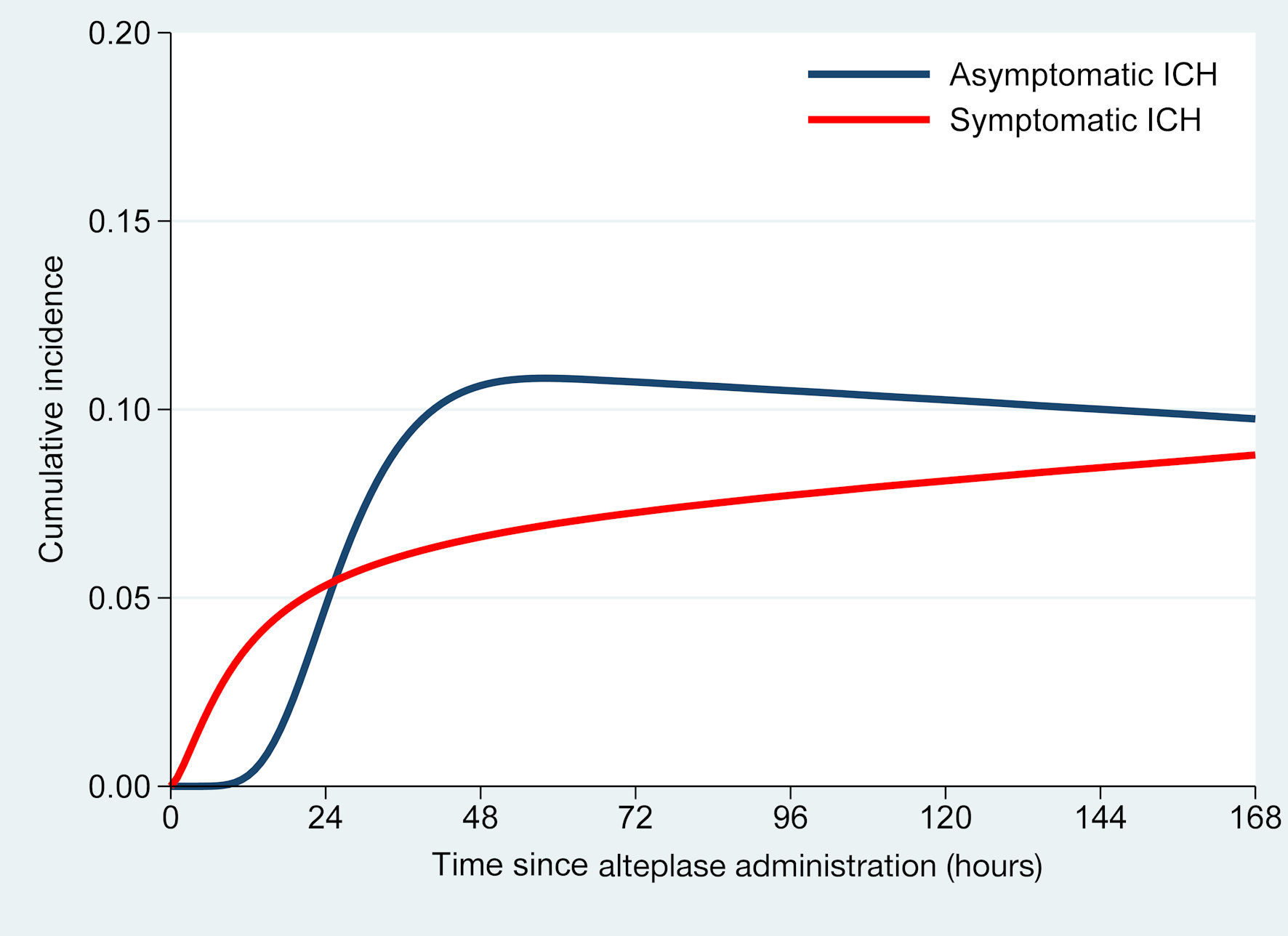Optimal Timing of Post-Alteplase Brain Computed Tomography: Routine Twenty-Four-Hour Versus Extended Forty-Eight-Hour for Detecting Asymptomatic Intracranial Hemorrhage
DOI:
https://doi.org/10.14740/jocmr6378Keywords:
Ischemic stroke, Thrombolytic therapy, Tissue plasminogen activator, Tomography, X-ray computed, Intracranial hemorrhages, Time factorsAbstract
Background: Intracranial hemorrhage (ICH) is a major complication of intravenous alteplase for acute ischemic stroke. Asymptomatic ICH (asICH) does not cause immediate neurological decline but may have medicolegal consequences if undetected. In Asian populations, up to 24% of post-alteplase ICH occurs beyond 24 h, suggesting that routine computed tomography (CT) at 24 h may underestimate its incidence. This study evaluated the diagnostic yield of CT at 24 h versus 48 h to determine the optimal timing for ICH detection.
Methods: A retrospective cohort study was conducted at Lampang Hospital from March 2017 to December 2024. Patient outcomes were analyzed using an illness-death multistate model with three health states: no ICH, asICH, and symptomatic ICH (sICH). Three transitions were modeled - from no ICH to asICH, from no ICH to sICH, and from asICH to sICH - assuming irreversible progression. The proportions of asICH detected by CT at 24 h versus 48 h were compared using the exact probability test.
Results: After exclusions, a total of 555 patients were eligible (54.8% male, mean age 65 years). Final transition outcomes identified 455 patients with no ICH, 51 with asICH, and 49 with sICH. Brain CT at 24 h detected 30.2% of asICH cases, while 48-h imaging detected 96.8%, with a significant improvement (P < 0.001).
Conclusions: CT imaging at 48 h post-alteplase improves asICH detection compared with the 24-h scan, reducing missed cases without added radiation or resource burden. Multicenter validation is needed to confirm whether 48 h should replace the current standard.

Published
Issue
Section
License
Copyright (c) 2025 The authors

This work is licensed under a Creative Commons Attribution-NonCommercial 4.0 International License.










